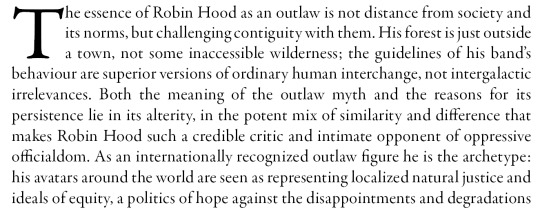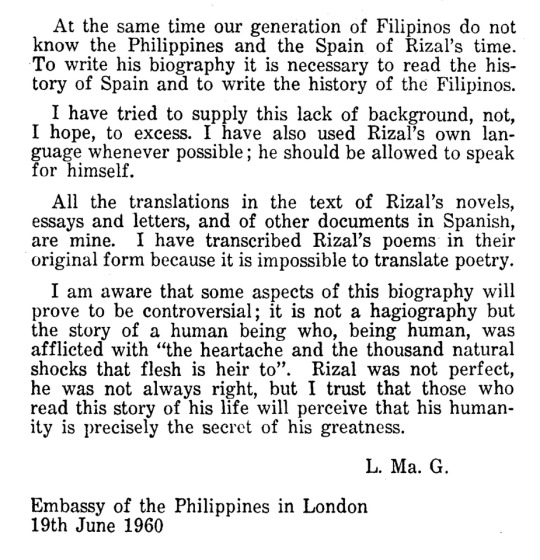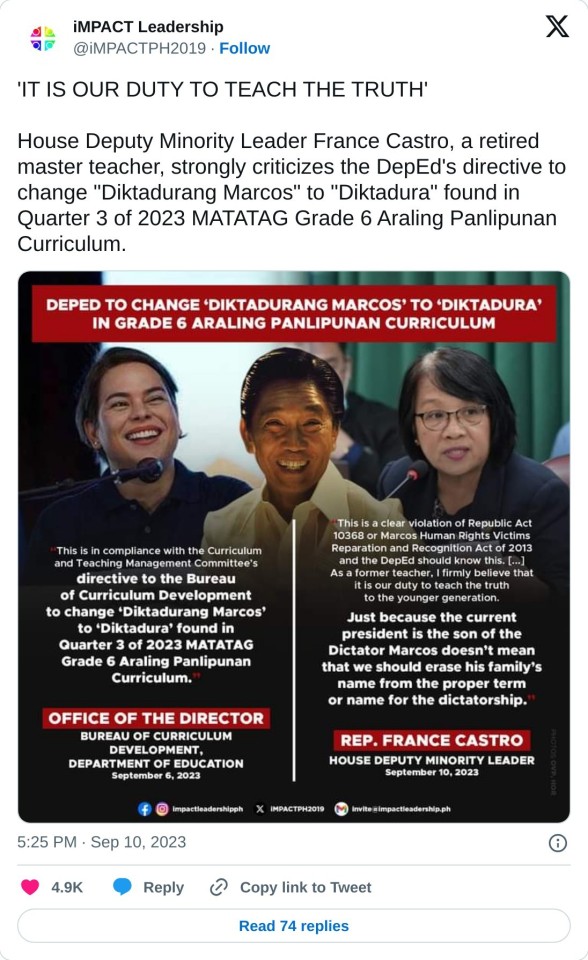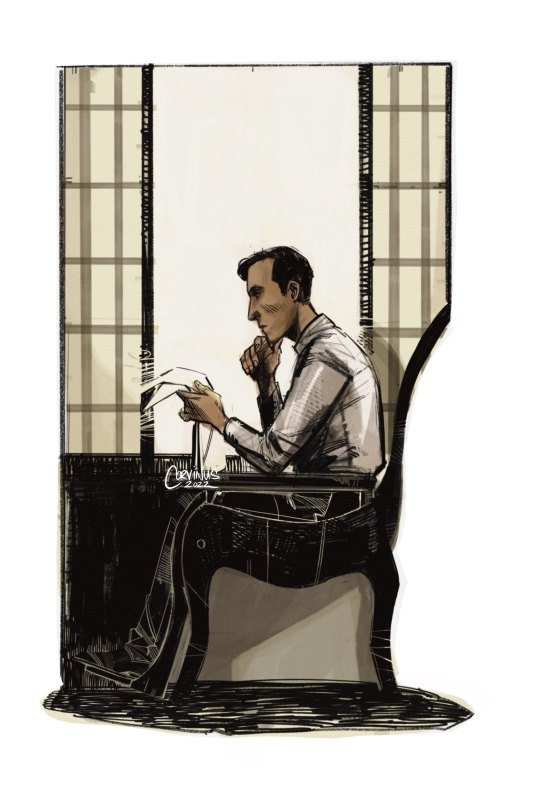#readings in philippine history
Text

The Kapampangan history will consist of the Luzon Empire, also known as the ‘Kingdom of Tondo’. There is a popular belief that the native Kapampangan are direct descendants from Central Java or from the Malang Region. According to historians, the Java or Malayan that used to settle along the banks of the Rio Grande de Pampanga, currently recognized as the Pampanga River, before the Spaniards came. The natives refused to submit to the authority of the colonizers, while Martin de Goiti discovered the Macabebe; wherein, he intended to reduce the number of native people and conquer the place.
On December 11th of 1571, Pampanga was divided into two towns and was dissolved into districts under Spanish authority. During that time, Pampanga has been considered one of the richest places in agriculture within the country, along with Manila and certain provinces. In fact, the Spaniards made the decision of turning it into a province of governmental control and taxation due to its rich cultivation, fishery, labor, and forestry industries.
On the other hand, the City of San Fernando, aka the ‘Heart of Central Luzon’, served as the Provincial Capital of Pampanga and Regional Center of Central Luzon due to its location. In the year 1754, the town was discovered and was named after the King Fernando IV of Spain. In 1892, Angeles City was called the ‘Bario Culiat’ and was separated from San Fernando. In the same year, the country’s national hero, Dr. Jose Rizal, made a stop-over in the town to find recruits as part of his mission. The Philippine Revolutionary troops that were led by General Antonio Luna burned the casa municipal that was made to be useless when the American forces approached the town in 1899.
In 1904, the Pampanga provincial government was transferred to San Fernando from Bacolor. Pampanga Sugar Development Company began to operate in 1921, which is the first Filipino company that financed sugar that became the catalyst for the exponential growth of San Fernando. However, it did not end the local’s hardship in dealing with the supervision and occupation of the Japanese Imperial Army in 1942. Not to mention, the Kapampangans are proven to be brave and can quickly stand on their feet as they are able to recover from the eruption of Mt. Pinatubo in 1991; it was a rough time for them as well as the other people residing in other provinces. Due to that, the Makatapak Festival has come to the surface– symbolizing the history of how difficult the duration and aftermath of the event were. Lastly, the year 2001 has been when San Fernando gained back the light and life of the town and became recognized as the 99th City of the Republic of the Philippines.

2 notes
·
View notes
Text
Navigating the Past: Unveiling History through Primary and Secondary Sources
Observation: History is an intricate tapestry woven from the threads of human endeavors and experiences – a guiding light for our present and a foundation for our future. It comprises stories, people, and events that have sculpted today's world. But how can we access this vast repository of the past? The key lies in distinguishing between primary and secondary sources. Primary sources serve as history's raw materials, including original documents, artifacts, and firsthand accounts. In contrast, secondary sources represent interpretations and analyses of these primary materials. These dual dimensions, like puzzle pieces, work harmoniously to unveil the multifaceted tapestry of bygone eras.
Insight: Engaging with primary sources shows us the remarkable ability to step directly into the shoes of individuals from the long past. These sources, spanning letters, diaries, photographs, and artifacts, function as portals into the minds, emotions, and tangible experiences of those preceding us. For example, perusing letters exchanged among World War I soldiers offers an unfiltered window into their fears, aspirations, and the unforgiving realities they confronted on the battlefield. Primary sources afford us a direct human connection that bridges the temporal abyss between their world and ours.
Nonetheless, it's imperative to recognize that primary sources can occasionally be constrained in scope and tinted by the viewpoints of their creators. This is where the complementary role of secondary sources comes into play. Historians, scholars, and researchers delve into primary sources, providing insights, interpretations, and contextualization. They offer a panoramic vista, facilitating our perception of the broader tableau by meticulously piecing together myriad primary sources into a coherent narrative. Secondary sources – including well-researched history tomes, enlightening documentaries, and scholarly treatises – bestow depth upon our comprehension of historical occurrences and their significance.
Learning: The voyage of comprehending history through primary and secondary sources constitutes a dynamic expedition of discovery. By immersing ourselves in primary sources, we cultivate our critical thinking faculties as we evaluate authenticity, bias, and context. We learn to interrogate the motivations driving creators and the prevailing societal norms of their era. This nurtures a more nuanced and empathetic grasp of the past, unveiling history not as a monolithic entity but as a vibrant mosaic of diverse perspectives.
Conversely, secondary sources arm us with the tools to scrutinize the interpretations laid forth by historians. As we traverse through assorted renditions of the same historical event, we discern that history is multi-dimensional. We acknowledge that the past remains amenable to reinterpretation as fresh evidence surfaces or societal values evolve. This awakening fosters humility in our assimilation of history and an openness to embracing its intricate complexities.
Aug 27,2023
1 note
·
View note
Note
Hi! Could you please recommend more books like Great effusion of blood? Many thanks. P.S. I love, LOVE what you do. You are amazingly talented and interesting person. Hope you're having a great week!
oh man it took me a minute to think of some recs for this bc I forgot what I had been reading that book for*
so! if you enjoyed the Great Effusion of Blood, you might ALSO enjoy

Violence and Civil Disorder in Italian Cities, 1200-1500, ed. Lauro Martines

Robin Hood in the Greenwood Stood: Alterity and Context in English Outlaw Tradition, Stephen Knight
*I was reading this book for one essay in it about Robin Hood, so I'm basing these recs off of that
#also tysm anon! i hope you're having a good week too!#i've mostly been reading essays and texts on philippine history and politics lately so it took me a full week to remember anything#about what i usually post on this blog. if it's not 2pm kanjani8 or the philippines my brain starts making a dial up tone#like all i can think of that's most like this book is a collection of essays on ph history UP made open access#ask tag#rec tag
31 notes
·
View notes
Text

'—he should be allowed to speak for himself.'
The First Filipino, Leon Ma. Guerrero
#book club tag#jose rizal#philippine history#....i should get a century tag system going here#anyway! his birthday was a few days ago but every day i think about 'he should be allowed to speak for himself'#i think a lot about a. ocampo's lecture on him and wail abt it ngl#anyway. this biography is fun to read but i see marcos' name there as president and i want to. tear smth apart with my hands#esp in the greater context of historical revisionism and image remaking the marcos dictatorship did#but this note. in this bio. endures in spite/despite that.
49 notes
·
View notes
Text
* The door opens a little, revealing Isa with a run-down and tired countenance.
Hey.
* Isa's eyes darken in quiet anger.
The Vice President passed a memorandum overwriting facts in our curriculum, erasing "Marcos" from "Dictator Marcos."
We are seeing the historical distortion of the darkest time of the Philippines known as the Marcosian Martial Law in real time. The corrupt in power dare erase the name for whom many heinous crimes against human rights were done.


Manhid na po ako. Pagod na rin ako sa mga kabalastugang ginagawa sa bansa ko. May personal na buhay rin ako. Pucha, sa dami kong pinag-iisipan sa buhay ko, daragdag pa 'tong mga 'to.
[in Tagalog] I'm already numb. I'm also tired of the bastardization being done to my country. I have a personal life too. Fuck, with the many things I think about in my life, all this just adds to it.
* Her grip on the doorknob tightens for a moment as she grits her teeth while looking away, but she only sighs before looking back at you.
I just wanted to tell you that, just in case. There are many unjust deaths under the Marcos era that still have not been brought justice.

(This^ is a thread. Google translates the tweets rather sufficiently, personally speaking.)
Have I mentioned that the election of our current leaders was not fair at all?
I'm tired. I want to help fix this country, but I'm so, so tired.
* Isa sighs again and moves to close the door, but she pauses and looks up at you again.
Promise me that you won't forget too.
We can't forget. We can never forget. Never again.
Thanks for listening.
* Isa finally closes the door, leaving you to yourself again.
#philippines#the philippines#philippine history#philippine politics#martial law#dictatorship#ferdinand marcos#marcos#never forget#never again#never forget never again#if i'm gonna write a post about the kabalastugan happening in our education system i could at least try to be a little fun about it#that's why i wrote it to read like a visual novel/undertale conversation or something#it's my only respite in this bullshit
11 notes
·
View notes
Text
"technically an incorrect statement" off to a good start
"this is a monument to a victory vs spain in the spanish american war" yeah in manila which led to the us occupying manila and also the spanish american war ended with spain relinquishing claim over its colonies to the us so you cannot separate that from the us colonization of the philippines
"the us aided cuba and the philippines in their rebellion" for their own interests and guess what happened after and what is still happening now
#'aided the philippines' mainly aguinaldo and he was a bitch#reading those replies just after i celebrated an american scoring in hockey while playing in an american city was Not Fun#how can you be ahistorical while discussing history
2 notes
·
View notes
Text

The US Federalized Philippine National Guard
The Philippine National Guard (PNG) was the descendant of the Philippine Militia that was created on March 1917. By April 1917 the PNG was created and ordered to muster its regiments and supporting units.
At the time, the Philippine Legislature created the PNG in hopes of showing to the US that they were capable of self-governance. The US Governor-General of the Philippine Insular Government supported this idea, as both envisioned the creation of a National Guard that may eventually be sent to join other US forces that were being shipped of to Europe. With the US having just joined the Great War, the idea was to create a division sized National Guard that could supplement the American Expeditionary Force to Europe.
However, in order to join regular army and national guard forces bound for Europe, the PNG must first by Federalized by the US government. For that to happen, they must follow the basic standards set up by the US Army. This proved to be harder task than anticipated.
The US Army's Philippine Department was initially supportive of the creation of the PNG. However, as time went on, and with many officers and resources being diverted to the war effort, they soon became unsupportive of the idea of the PNG. They saw it a another unit that would steal the meagre resources the army forces in the islands were recieving. Because of this the army was reluctant, and sometimes denied, request by the Governor-General to transfer weapons, uniforms, and Philippine Scout officers and NCOs to the forming militia units.
Despite these problems, the PNG grew and by 1918 there were 25,000 members in the PNG.
However, there was another problem the PNG was encountering. The US Government was hesitating to Federalize the force. The reason for this was because the Federalization of the PNG would mean that it would be incorporated in the the Federal Army. With the PNG having Filipino officers, some members of Congress did not like the idea of American soldiers being forced to salute and take orders from Filipino officers.
With dwindling hopes of Federalization, and with pay in the PNG not enough for to sustain its member's families, many of its members began leaving until there were less than 5,000 troops left.
Later on, rumors of the eventual Federalization of the PNG and a possible deployment overseas reinvigorated its members, as preparations were done for a possible shipment to the US. However, preparations were not completed until November 11, 1918, the same day the Great War ended. Then, slightly over a week after that, the US Government finally Federalized the PNG.
However, with the war over and with nothing left to do, the PNG was left in the Philippines, where they were to continue its training. By 1921 the PNG was eventually disbanded.
----------------------------------------
Okay, so the Philippine National Guard, a rarely talked about, and often forgotten unit. In fact, barely anyone in the Philippines remembers the PNG. Which is a shame, because it was the Philippine's biggest attemot to contribute something during World War 1.
So, it was a bit hard figuring out what the PNG wore, because I could barely find images of them. So I had to base this piece on the accounts of one og its members and a description of the PNG I found in an article. According to the article I found, the PNG conducted its final public parade on November 14, 1918. In hopes of impressing more recruits, they were issued khaki or olive drab uniforms, which were basically surplus US Army uniforms. The problem is, since they were surplus army uniforms meant for larger American soldiers, they were quite big and loose for the Filipino troops. As you can see here, the uniform, which is the Pattern 1917 wool service coat, is loose on Silver.
This loose, and sometimse torn clothing, and the fact that some were carrying wooden rifles during the November 14 parade resulted in many onlookers laughing at the sorry state of the PNG. This embarassed and saddened many of its members, that's why Silver has a sad look.
Next, we move to the headgear. An account by a veteran of the PNG mentioned that they were issued stetson hats. So I assume he means the Pattern 1911 service hat.
Lastly, you can see Silver holding the US flag. Since the Philippine flag was banned by Act 1696 (Flag Act) and since the Philippine was an unincorporated territory of the US, then the PNG's national colors would be the US flag.
#Silver Wing#Random Art#History#History With Ponies#World War 1#The Great War#First World War#Philippine National Guard#PNG#Do people read my tags?
16 notes
·
View notes
Text
I ADORE GEN INFORMATION AND HISTORY STUFF SOOO MUCH ... and etc etc etc and and and :(( <3 god i love the plethora of information ik and. etc.
#⋯ ꒰ა starry thoughts ໒꒱ *·˚#hey guys wna know some random facts about the chinese dynasties and types of sharks and stoat fun facts#and the roman empire and everything about greek and roman and egyptian and norse mythology#even a bit of scandinavian mythology and hawaiian myths and philosophers like aristotle and his nicomachean ethics#and edgar allan poe's works as well as lois lowry and neil gaiman and shakespeare oh god shakespeare and the bible and christianity and#world history filipino history american and french and british revolutions and wars and history and the founding of the united states and#IDK OKAY i just reaaally love random information and HISTORY so goddamn much. i am such a nerd. i love being this geek that i am.#mythology in general is probably one of my biggest special interests though. oh my god.#RIGHT WAIT I REALLY LOVE ROCKS AS WELL AND i adore all subjects in school actually and and and. i love knowledge so much.#ASTRONOMYYYYYJRBWJGWSUGDJSBFKSBFK wait okay i'll be normal (lie) for a second again#mythology. it's insane i learned about hawaiian mythology in this minecraft server uhhh for this. yeah.#i miss that tbh! no longer into the fandom/book series for probably aha obvious reasons but it's nostalgic to me still#ANYWAY RIGHT BACK ON TRACK okay egyptian mythology and norse i rmbr i memorized some hieroglyphics and uhh runes? before#god bless rick riordan's books for starting my obsession with different kinds of mythologies tbh#yk one reason why my eyesight probably started sucking more was bcs i read so much of the mythology book by edith hamilton on a road trip#upwards to a norther part of the philippines and good gods it was a bumpy ride! i still remember that moment vividly though#and. i'm tired of typing now. goodbye.
5 notes
·
View notes
Text
I've absorbed some lingo used by stans, that upon seeing that one painting of St Just and Robespierre ruling hell together somewhere in this site, the first thing that immediately registered in my brain was "two french revolutionaries, joining forces to maximize their joint slay". I sat appalled, and stared into space for a bit and tried my very best to not laugh because that phrase when attributed to Robespierre and Saint Just is unfortunately very funny albeit tasteless.
#kinda cursed#but it also made me laugh#but I do plan on reading about Frev#because its harkening to the days when I used to read about the early Philippine Republic and the malolos congress being a fucking mess#every once in a while I pick up history books
2 notes
·
View notes
Text
when liv captioned her post in spanish i just KNEW people were going to comment that shes proud to be latina
and they did not disappoint .. !
she is literally half asian. filipino, specifically. and it makes me so, so sad that thats not more known about her.
#even tho she’s arguably the biggest filipino star aside bruno mars and her. but she didnt grow up with that heritage#so she doesnt represent it. and i cant blame her. but it just brings up a larger issue of filipino culture/assimilation/lack of#proud representation for being pinoy in western media by someone as big as her#and bc of it - and unless you know about the history of the philippines being colonized by the spaniards - you wouldnt know#the rodrigo in her name is of her filipino/asian heritage#this is giving ariana grande latina queen all over again but on a much more personal level 😩😩#i had to stop reading the comments bc all the latina comments from 100% serious ppl was bothering me sm#again i cant blame them bc we’re/our history isnt well known or represented but it still hurts we cant have that rep anywhere#let alone by someone as big of a star as her#olivia rodrigo#philippines#filipino#mytext
5 notes
·
View notes
Note
You like cats, right, Giovanni? Have you ever heard of the nekomata? They're two-tailed cat spirits from Japan!

"I have! One of the older thralls the Master had when I rejoined him in Sugbu was a Japanese pirate named Akitake! I think he was a disgraced lord from Edo who joined Datu Dalugdog and many other pirates of the South China Seas by the time. Either way! He told me about the nekomata and other creatures in Japan like the tanuki and the Orochi beast! Supposedly when a cat has lived a long enough life, its tail will split in two! I think they also become especially wise or powerful!

"Ohhh, I'd love to befriend a nekomata! I will give it all the love and hugs and cuddles and pets and treats it will ever ask for!!"
#why doesn't anime cover Edo-period pirates?#One Piece doesn't count#I guess it's something that doesn't have historian specialty like the Caribbean or Barbary coast does#I AM SAD#COME ON#you got Korean and Japanese and Malaysian etc pirates all over the place#why do I have to go to Philippine history to read about them ;_;#[Giovanni Vespucci]#cats tw
5 notes
·
View notes
Text

♛ I. Brief History
♛ II. Toponyms
♛ III. Oral/Unique Traditions, Folk Beliefs, & Culture
♛ IV. Language
♛ V. Tourist Destination
♛ VI. Trivia
♛ Music Video by Exploring Pampanga
♛ References
(Note: You may click the link to be guided on a specific section)
2 notes
·
View notes
Note
Philippines hcs? Nd who he seems to be compatible with based on what you know of him?
Hmm I don’t have many thought. Actually it’s just one x_x in most of the fanart I’ve seen of him he’s taking pictures or videos on his phone so I started to hc him to be into recording himself and/or his partners during sex. and maybe he should join the onlyfans crew ;)
I never really thought about who to ship him with.. I think he’s pretty, the girls would def be all over him. I tend to ship a lot of characters with Belarus so maybe her. They would be beautiful together and I feel like he would make her laugh a lot 🥰 also while I’m at it creating now rarepairs Philippines and Prussia seem like they would vibe with each other.
#aph philippines#hetalia#riva.ask#wfsn#i really want to get more into asean gang tbh! the characters seem a lot of fun!#and Taiwan and Vietnam too! the ladies are right there!!#but I haven’t read much about them yet#and I’ve seen people talk about coloniser x colony ships being a thing and since I don’t know shit about history I also want to read into#those things#it’s important to me to not be insensitive about certain topics ao I want to take my time to learn about stuff#you know I just want to avoid mistakes that ‘the old fandom’ made#who do other people ship philippines with?
2 notes
·
View notes
Photo

APOLINARIO MABINI July 23, 1864- May 13, 1903
VIII Strive that your country be constituted as a republic, and never as a monarchy: a monarchy empowers one or several families and lays the foundation for a dynasty.
-Mabini’s Decalogue for Filipinos
Skipping pleasantries when introduced to Aguinaldo, [Mabini] asked if the Americans had committed to help Filipinos gain independence from Spain in writing. Aguinaldo had no such commitment. Mabini then ruined the festive mood by saying that the declaration of independence was premature. He criticized the wordy document and its statement that the colors of our flag mirrored those of the US. Worse, the document stated that we owed Philippine independence to the grace of “The Great North American Nation.” That afternoon, Mabini made his first political enemy by replacing Ambrosio Rianzares Bautista, author of the declaration of independence, as Aguinaldo’s principal adviser.
Months later, when Aguinaldo submitted Mabini’s appointment as [President] Chief Justice of the Supreme Court to the Malolos Congress for confirmation, Rianzares Bautista seized the chance for revenge by exposing Mabini’s physical disability in a newspaper article. Writing under the thinly disguised pseudonym “Zerzarian,“ he asked: “How can a man without feet be appointed or elected to such high office?”
To which Mabini replied: “Does the job of Chief Justice of the Supreme Court require constant walking? No? Therefore, he can be a man without feet, as long as he possesses the brains and able hands for the office.” Not content with that, Mabini gave the dagger a few twists before pulling it out. In an open letter to “Zerzarian,” Mabini, writing under the pseudonym “Paralitico,” said: “Being assured that old age produces in definite persons a sickness at least as inconvenient as paralysis, I shall not bear you any grudges.”
-Mabini: Conscience of the nation, Ambeth Ocampo [the open letter being referenced here is Mabini’s October 5, 1899 letter to Zersarian]
anyway, I love him

society6 | ko-fi | redbubble | twitter | deviantart
#apolinario mabini#philippine history#listen. listen to me. i love him. Love™ him.#I Am Always Thinking About Him#if i think about him for too long i get so emotional about literally everything ಥ_ಥ#im going back in time and strangling paterno with my bare fucking hands. aguinaldo too tbqh!!!#there's a line that a lot of people echo in texts about machiavelli echo regarding him as a sort of prophet: that but mabini :|#i feel so sad about it too. like. man. what the fuck has this country come to. our revolutionaries fought and bled and died for us#and look at what happened :\ anyway lino brocka was right about the marcoses etc. read mabini's work. fuck the fascists.
93 notes
·
View notes
Text
colonization is funny. it shapes the history of the colonized land, yet constitutes only a short paragraph in the history of the colonizer
#im using my physically compromised position to read#and compare what i learned in american history classes to the history of the philippines#its sad. so much of filipino history is about being colonized#and the philippines took up only a couple of sentences in my history books#and it was just listing the fact that it was acquired. nothing more
0 notes
Text
I read a very interesting article recently.
Hiroo Onoda is a famous name among WWII history buff circles. He was the soldier who disappeared into the Philippine jungle at the end of the war with three other soldiers, and ended up being the last to surrender after 29 years fighting a "guerilla war" until he surrendered in 1974. For at least twenty years he fought with one other, Kinshichi Kozuka; who was killed by police in 1972.
The article was about one woman named Mia Stewart, a Filipino-Australian, who's trying to get the funding to finish a documentary she's been working on for about 20 years.
The documentary she's making is trying to shed a little more light than the fascinating "lone samurai" legend that has been built up around Onoda. It very pointedly asks one thing -- what is this "guerilla war" he was fighting for 29 years? Who were his opponents? Who was he fighting?
Onoda (and Kozuka until his death) were killing, sometimes in very gruesome ways, almost exclusively Filipino civilians. Innocent people who were just living their normal lives -- who couldn't fight back. One of their victims was Mia Stewart's great uncle, when she was barely two years old.
The article essentially asks, "war hero or serial killer?"
Those civilians he stalked and killed or stole from for nearly thirty years weren't ever asked their opinion before the Filipino president gave a blanket pardon, Onoda was welcomed home a hero, and he gained worldwide fame. Their side of the story entirely forgotten as some nebulous force he was fighting "guerilla warfare" against.
It was genuinely kind of enlightening because even I have kind of looked at the Onoda story as a, "wow that's crazy" and never really gave it more thought of "who exactly was he fighting?" I figured he was shooting at cops, if anything. But no, it was nothing as simple as that.
The documentary is not out yet (she doesn't have the funding to finish it, the article was essentially one long ad to go "and if you can donate please do so") but there is a nine minute extended trailer from two years ago
On some level I think if I'd just given it any ounce of thought I'd have gone, "who was he fighting actually?" But instead I just assumed he spent nearly thirty years fighting cops… not doing what the IJA did best and mutilating helpless civilians. But I bought the popular narrative entirely and didn't give an ounce of a think at the question of who was he fighting in this 'guerilla war.'
"Actively fighting a war… against who?" is a question that just straight up never came to my mind.
7K notes
·
View notes